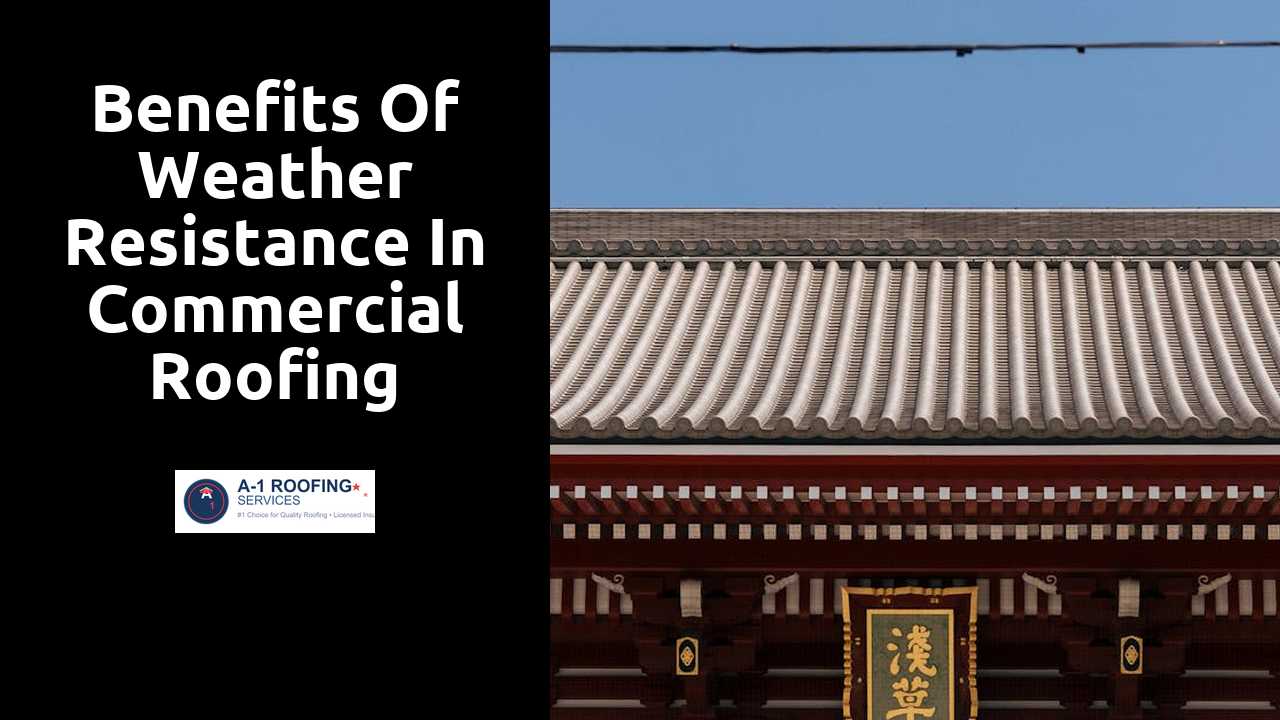
Benefits of Weather Resistance in Commercial Roofing
Table Of Contents
Versatility in Various Climates
Commercial roofing systems designed with weather resistance in mind can effectively function in a range of climates, from humid coastal areas to arid deserts or snowy environments. Such versatility ensures that businesses remain protected from the elements, which may otherwise lead to deteriorating structures. Selecting the right roofing material plays a crucial role; options like metal roofing, modified bitumen, or thermoplastic polyolefin (TPO) can adapt to various environmental conditions, minimizing maintenance issues and prolonging the lifespan of the roof.
Additionally, the installation of weather-resistant roofs supports energy efficiency across different weather conditions. Insulation properties help regulate indoor temperatures, reducing heating and cooling costs regardless of whether it is summer or winter. This versatility not only enhances comfort for occupants but also contributes to lower energy consumption. Investing in a roof that can withstand varying climates proves beneficial for both the building and the environment, promoting sustainability while ensuring durability.
Discover more here.
Adapting Roofing Solutions for Different Weather Patterns
Commercial roofing solutions must be tailored to withstand various weather conditions. In areas prone to heavy snowfall, roofs may be designed with steeper slopes to prevent accumulation. Conversely, regions with intense rainfall might benefit from systems incorporating proper drainage features to minimize water pooling. Each design choice reflects a response to specific environmental challenges, ensuring the longevity of the structure.
In addition to snow and rain, wind resistance is crucial in hurricane-prone areas. Specialized materials and installation techniques enhance durability against strong gusts. Urban and coastal environments require careful consideration of salt exposure, which can deteriorate traditional roofing materials. By adapting roofing systems to address these patterns, property owners invest in solutions that not only protect their buildings but also enhance their value over time.
Enhanced Aesthetic Appeal
Commercial roofing options have evolved to not only serve functional purposes but also to enhance the overall aesthetic appeal of buildings. Weather-resistant materials come in a variety of colors, textures, and styles, allowing property owners to choose designs that complement their architectural vision. This diversity can transform a mundane commercial building into an attractive focal point in the community, which can influence customer perception and retention.
The use of materials like metal, tile, and modern synthetic options enables architects and builders to push creative boundaries. These materials can mimic traditional roofing styles while providing enhanced durability and performance. Attention to detail in roofing design improves not only the attractiveness of the property but also boosts its market value. Weather resistance combined with visual appeal creates a compelling reason for businesses to invest in quality roofing solutions.
Choosing Weather-Resistant Materials for Visual Impact
Selecting the right materials can significantly enhance the visual appeal of a commercial roof. Options such as metal, slate, and polymer-modified membranes provide durability while maintaining aesthetic quality. These materials come in various colors and finishes, allowing for a customized look that aligns with the overall architecture of the building. The ability to choose from a wide range of styles means that business owners can create a roofing solution that not only withstands harsh weather but also compliments their brand identity.
Incorporating weather-resistant materials can elevate a structure's design, making it more inviting and impressive. Reflective coatings and textured finishes not only serve functional purposes but also contribute to the building’s character. By investing in visually appealing yet resilient roofing solutions, companies enhance their market presence. This strategic choice can attract clients and tenants who appreciate both beauty and reliability in construction.
Environmental Benefits
Weather-resistant commercial roofing systems play a vital role in promoting sustainability within the construction industry. These roofs are designed to withstand extreme weather conditions, which can lead to longer lifespans and reduced maintenance needs. By minimizing the frequency of repairs and replacements, businesses can significantly lower their environmental footprint. This durability also means fewer materials are wasted over the roofing's lifecycle, contributing to a more sustainable approach to building infrastructure.
Additionally, weather-resistant roofing often incorporates eco-friendly materials and technologies, further enhancing its environmental appeal. Many modern systems utilize reflective surfaces that reduce heat absorption, leading to decreased energy consumption for cooling. This not only lowers operational costs for businesses but also reduces greenhouse gas emissions associated with energy production. Incorporating green roofs or living roofs within weather-resistant designs can even provide habitats for local wildlife, fostering biodiversity in urban areas.
Sustainable Practices in Weather-Resistant Roofing
The growing emphasis on environmental responsibility has led to innovative approaches in roofing that prioritize sustainability. Many manufacturers now offer materials that are not only durable but also eco-friendly. Options like metal roofing or rubber membrane systems promote energy efficiency by reflecting sunlight, reducing heat absorption, and consequently lowering cooling costs. These materials often utilize recycled content, further lessening their environmental impact.
Incorporating sustainable practices extends beyond the choice of materials. Installation processes can be optimized to minimize waste and energy consumption. Roof systems designed with easy maintenance and repair in mind contribute to their longevity, ensuring that replacements are less frequent. By investing in weather-resistant roofing solutions, businesses can achieve a dual benefit: enhanced performance against the elements and a commitment to environmental stewardship.
Related Links
How Commercial Roofing Can Reduce Operational CostsThe Role of Roof Warranty in Commercial Roofing Benefits